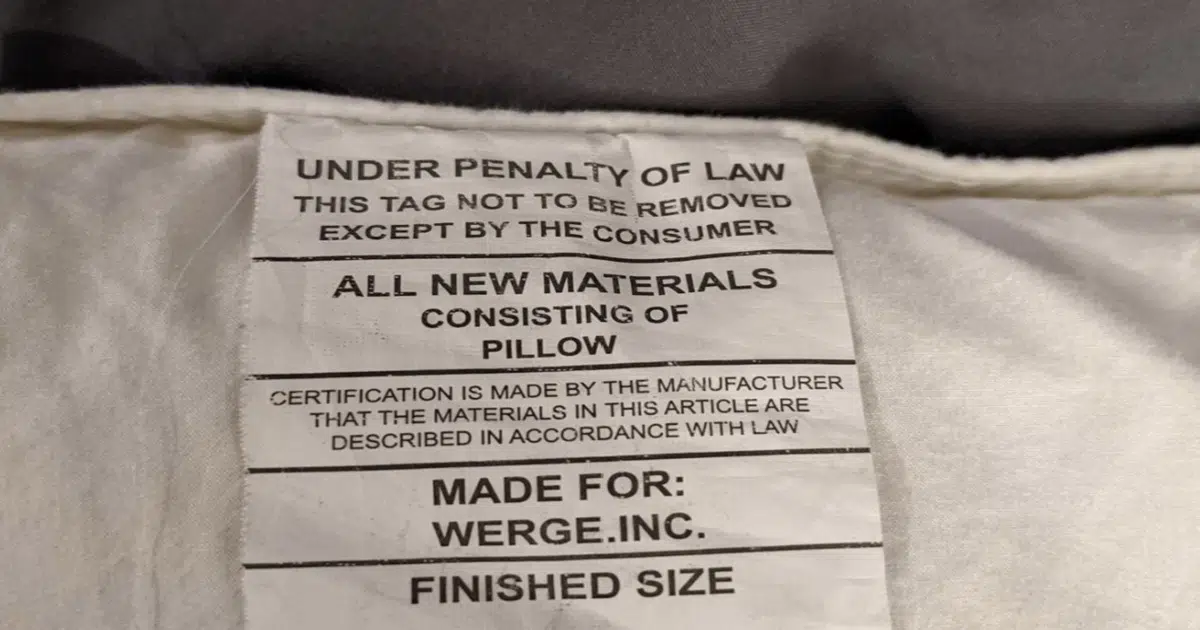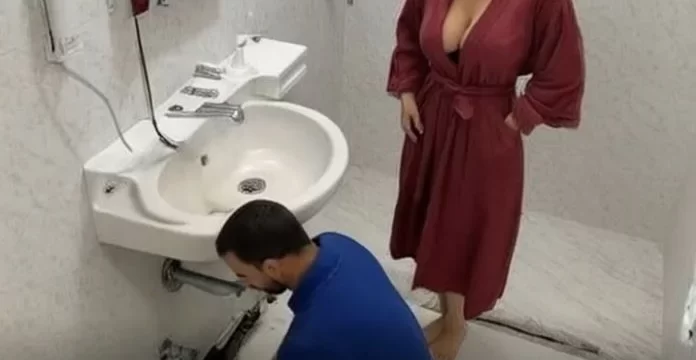We’ve all experienced that annoying moment—you’re fluffing your pillow, ready to settle in for a good night’s sleep, and that scratchy tag keeps poking your cheek or twisting in your hand. It’s tempting to grab a pair of scissors and just snip it off without a second thought. But then you read the bold, alarming message printed on the tag: “UNDER PENALTY OF LAW THIS TAG NOT TO BE REMOVED EXCEPT BY THE CONSUMER.”

That phrase has startled more than a few people into pausing, wondering if cutting off a tag could somehow get them into legal trouble. When my husband first saw that warning, he literally told me not to touch it until we looked into what it actually meant. It’s funny in hindsight, but it also raises a good question—what’s the deal with these tags, and are we really allowed to cut them off? It turns out that these infamous fabric tags, officially known as law labels, are not there to make our lives harder. They exist for a good reason. Back in the day, some bedding and furniture manufacturers were stuffing products with questionable and sometimes downright disgusting materials—think horsehair or floor sweepings—and not telling consumers about it. To address this, regulations were introduced requiring manufacturers to list the exact contents of items like pillows, mattresses, and cushions.
The goal was transparency, so buyers could make informed choices and avoid ending up with products filled with potentially harmful or low-quality materials. The stern-sounding label serves to protect consumers, not to scare them. The dramatic warning, especially the part about “penalty of law,” isn’t actually aimed at you. That’s directed at retailers and manufacturers, who are legally obligated to leave the label intact until the product is sold. If they remove the tag before you buy the item, they could be fined or penalized. But once you’re the proud new owner of that pillow or mattress, you are completely within your rights to cut the tag off. My friend, however, refuses to remove tags from her pillows—even the ones she’s had for years—and it drives me a little nuts when I stay over. But hey, some people are cautious like that, and there are valid reasons to leave the tag on for a while.
For instance, if you’re planning to return the item, some stores might ask for the tag as proof of purchase or product information. In some cases, the tag includes cleaning instructions that are separate from the usual care label. I’ve personally ruined a couple of pillows because I didn’t check for washing instructions before tossing them into the machine.
And if you ever want to resell or donate your pillow, especially larger items like a mattress, having the original tag attached can make it easier to prove the item is in good condition. So while it’s not illegal for you to cut off the tag, it might save you a headache later if you leave it on temporarily. One reason people still hesitate is the old-fashioned wording of the tag. The legal phrase is a holdover from early 20th-century consumer protection laws. Even though it now includes “EXCEPT BY THE CONSUMER,” the warning still sounds more dramatic than necessary. It’s outdated language that lingers, making a simple act feel like a felony. While most pillow tags are safe to remove once purchased, there are some exceptions where you should think twice. Items like baby pillows, crib mattresses, or car seats often include additional safety and regulatory information, so it’s better to leave those labels in place. Also, if you plan on making a warranty claim, some companies will require the original tag to verify product details. The same goes for donations—charities may only accept items with tags still attached to ensure they meet hygiene and quality standards. Ultimately, though, if it’s your pillow and you’re not concerned about returns, warranty claims, or resale, you can go ahead and cut that tag off with confidence. You’re the consumer, and the law supports your right to do so. Whether you toss it, save it, or turn it into a quirky piece of wall art, the choice is yours. Just maybe double-check that it doesn’t contain any info you’ll need later. So the next time that scratchy little tag is bothering you during the night, feel free to fight back—with scissors in hand and no fear of legal consequences.





